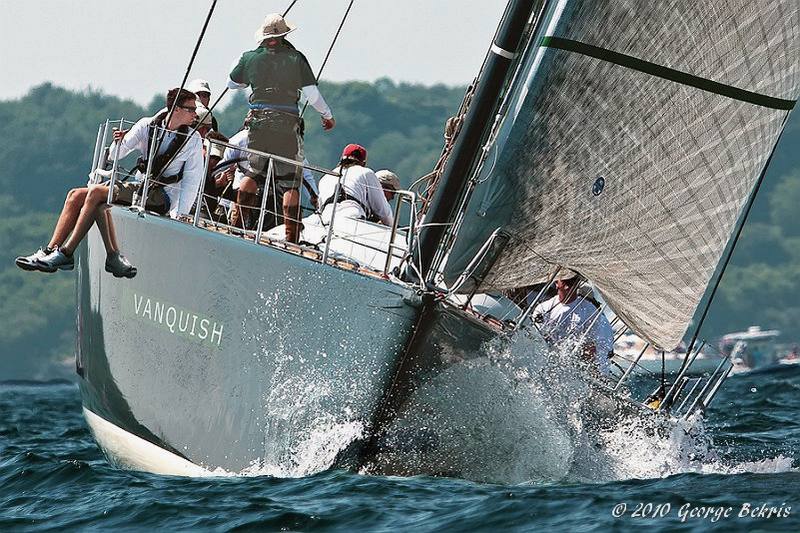
While the water views from anywhere along Newport Harbor (R.I.) are already magnificent, they will be absolutely breathtaking in late June and early July when 32 ocean-going yachts set sail in the Transatlantic Race 2011, which charts a course that stretches 2,975 nautical miles from Newport to Lizard Point, at the end of a peninsula in South Cornwall (UK). This history-making event is organized by the Royal Yacht Squadron, New York Yacht Club, Royal Ocean Racing Club and Storm Trysail Club, with pre-start activities taking place at the New York Yacht Club’s Harbour Court clubhouse in Newport and the awards taking place at the Royal Yacht Squadron’s Cowes Castle clubhouse on the Isle of Wight.
The fleet runs the gamut from sleek traditional designs, such as the 94’ William Fife-designed Sumurun, to sophisticated super yachts, such as the 289’ custom Perini Navi clipper sailing yacht Maltese Falcon, with three masts so tall (190’) they barely clear Newport’s towering Pell Bridge, which serves as a gateway to Rhode Island’s famous City by the Sea. And as those who are veterans of ocean racing will attest, crossing the Atlantic Ocean is no small feat, especially when storms, testing seas and even icebergs (still a danger in the North Atlantic in June) are included in the mix of challenges encountered.
“What I find so incredible with open-ocean racing is that there are very few things that you can do these days that are the same as what people did 400 years ago,” said Sumurun’s owner Robert Towbin . “You have such a sense of history when you’re out there and for a couple weeks you get to feel, in effect, the same way Columbus felt.”
Towbin has sailed Sumurun in two previous transatlantic races, winning the Classic Division in the 2005 Rolex Transatlantic Challenge and taking overall victory in the 1997 Atlantic Challenge Cup presented by Rolex. He is currently preparing his classic yacht, which was built in 1914, to endure what will be its first challenge of the 2011 sailing season. “If you have an older boat, a race of this complexity takes a lot out of it, so we are putting a lot of work into it to get it up to date,” said Towbin.
Three separate starts – June 26, June 29, and July 3 – are planned (Sumurun will be in the first start) to “stagger” the yachts of different sizes and ability so that they will arrive in England in proximity to each other. Challenging their crews both mentally and physically, the larger boats hope to finish the race in 8 to 12 days, while the smaller boats may take up to 18 to 22 days to finish.
In addition to class winners, whichever yacht finishes the course with the fastest elapsed time will set the benchmark for a new racing record from Newport to Lizard Point, to be ratified by the World Speed Sailing Council. Rolex watches will be awarded to the record holder and the overall winner (on corrected time) under IRC.
It’s anyone’s guess which of the true racing thoroughbreds entered might prevail. Among them, scheduled to depart in the final race group, are the VOR 70 crewed by PUMA Ocean Racing Team, the Newport-based second-place finisher in the 2008-09 Volvo Ocean Race and entrant in the next edition as well; Rambler 100, George David’s maxi rocket ship that has been tearing up race courses since the beginning of the year, including breaking the record for the RORC Caribbean 600 and taking line honors at the Pineapple Cup-Montego Bay Race; and ICAP Leopard, which holds the current record from Ambrose Light to Lizard Point for monohulls using powered sailing systems.
And if that’s not impressive enough, there will be two all-youth teams competing, one from Germany (aboard the Andrews 56 Norddeutsche Vermoegen in race start two) and one from the U.S.A. (the All American Offshore Team’s IRC 65 Vanquish in race start three). In addition, four Class 40s, high-performance monohulls designed specifically for shorthanded sailing, will have their own class (starting in the second group).